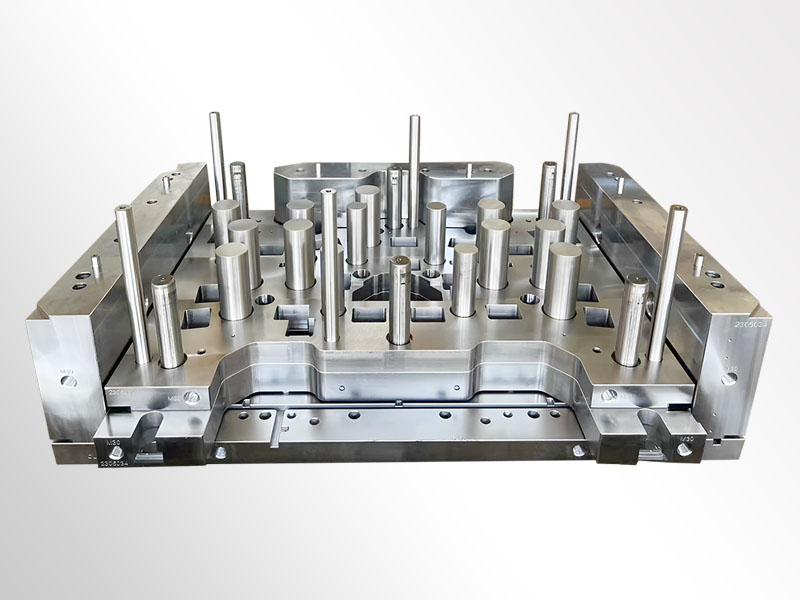1. MoldBase, also known as Mold Base.
The mold embryo is the skeleton of the entire set of molds, and the production of all mold components needs to consider the structure of the mold embryo. The cost of mold embryos generally accounts for about 30% of the entire set of molds. Mold embryos are manufactured by specialized large-scale mold embryo factories and have been standardized. Each mold manufacturing factory only needs to customize to the mold embryo factory according to their own needs.
The mold is divided into panel, A board (front template), B board (rear template), C board (square iron), bottom plate, top pin panel, top pin bottom plate, driver cylinder, guide pillar, return pin, top pin, support head, limit pin, etc. At present, the large-scale mold manufacturers in the Pearl River Delta region include Longji Mold (LKM), Hongfeng Mold, Zhonghua Mold, etc. Among them, LKM is the most famous, and its mold is widely used by mold manufacturers, ensuring quality and accuracy.
2. Mold core, also known as mold cavity, refers to the formed mold core embedded in the mold embryo template. Divided into anterior cavity and posterior core, commonly known as anterior cavity and posterior core.
Why embed mold kernels within the template?
Mainly to save costs. Because plastics have high requirements for the steel properties of molds, such as hardness, corrosion resistance, high temperature resistance (thermal deformation), etc; The template of the mold does not require too high requirements. The hardness of the mold core is generally 45~65HRC, and the hardness of the template of the mold embryo is 30~45HRC; The steel used as a mold core can reach RMB 200 per kilogram, while the steel used as a mold embryo generally only costs RMB 20-30.
Note: HRC represents Rockwell hardness.
3. Sprue. The injection nozzle of the injection molding machine barrel injects molten plastic raw materials into the mold cavity through this device.
4. Slider, also known as row position. The structural components that must be used for smooth mold production. Due to the unique structure of some products, such as side gaps, inverted buckles (hooks), etc., a row position is required to release the mold.
5. Angle Lifter. Similar to the row position, it is also a structural component that must be used for smooth mold production.
6. There are also some terms related to molds: parting line (P/L), mold benchmark, shrinkage rate (Shrinkage), layout, steel material, copper electrode (made of copper, graphite, etc.), reverse buckle, water transportation, draft angle, cold well, runner, injection simulation, parting, mold release, opening and closing steps, mold number, polishing (saving mold), soft mold, hard mold, mold indication treatment, test mold (TEST MOLD), mold modification, mold installation, mold delivery, etc.
7. From the above, it can be seen that a set of molds can be subdivided according to the functions of its various components: runner system, forming system, temperature control system, exhaust system, ejection system, opening and closing system, and reset system.


